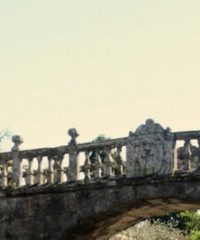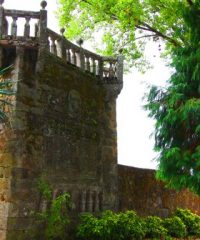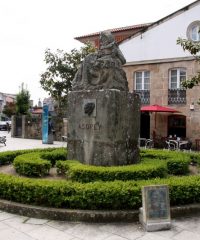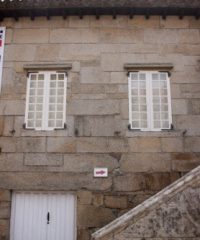Is the only arch of the four that aforetime existed in the square which is conserved. It was used by the nobles of the palace to move through the various departments of the edifice, or to access the privately part the they owned in the church of…
- Albariño wine festival
- Apartaments
- Bar / Taps
- Cambados Town
- Cambados, capital of Albariño
- Fefiñáns Town
- GUIMATUR
- Hostel
- Hotel
- Leisure
- Museums Network
- PAVI - TREN
- Pharmacy
- Restaurant
- Rural house
- San Tomé Town
- Wine cellars
- Wine museum
- Wines
XVI century balcony tower.
Was commanded to built in 1622 by Gonzalo Valladares, I Viscount of Fefiñáns in the parish of Cambados, San Mamede de Corvillón, between Fefiñáns and Tragove.
The birthplace of Ramón Cabanillas is a small sailor building located in the district of Fefiñáns in Cambados, which was restored and converted into a house-museum and open to the public on July 28, 1998.
This square was commonly known as Plaza Diaria, due to it was a place where daily you could buy fresh products such as fish and vegetables .
Square dedicated to the sculptor from Cambados with the same name. In this square you can find a replica of “A Naiciña” one of the best known works of the sculptor, made by a disciple of Asorey, Xosé Cao Lata.
Built in the second half of XVIII century, by the Torre de Asadelos family, captures the attention in the facade of the Palace the “patín” (element that allows access, directly from the outside to the top of the housing) with granite…
Pedro Bazán de Torres, pastor of Cambados, ordered the construction of the Manor, in the XVII century, restored in the XVIII century by Pedro Bazán de Mendoza, being the residence of his son Pedro Pablo Bazán de Mendoza, famous translator of…
Bronze piece made by Lucas Míguez to mark the 50th anniversary of the death of the sculptor in 2011.
The Path of A Calzada is the natural link between ancient villages of Fefiñáns and Cambados . It was built in 1852 with stones from the old convent of San Francisco and later the trees were planted in 1855.











